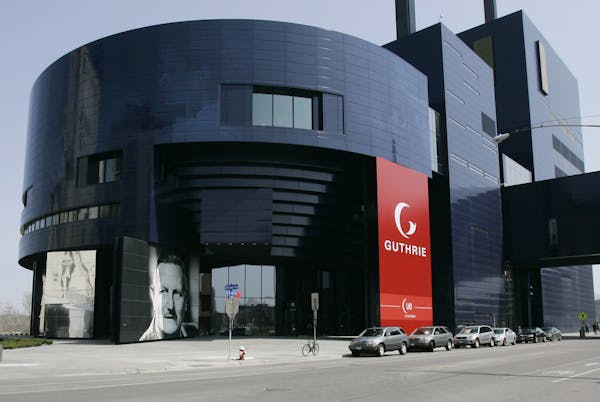Suddenly, this thing that seemed so right and necessary has turned malignant.
Reverend John Hale — the calm and assured clergyman summoned to discern witchcraft in Salem — reveals in his eyes and voice the realization that he has helped loose an inquisition that has run amok. Hysteria has bred suspicion and destroyed lives. Hale (the solid John Catron) is in a quiet panic because he knows he cannot put the curse back into the box.
This seems the moment of truth — the message we should carry home — in Joe Dowling's production of "The Crucible," which opened Friday at the Guthrie. Dowling, who leaves the Guthrie in June, wanted one last go-round with playwright Arthur Miller and he chose this epic theatrical fable steeped in the power of mob suggestion, fear and state authority.
"The Crucible" marks the seventh time in his 20 years as artistic director that Dowling has put Miller's work on the Guthrie stage, and the first he has directed himself since "Death of a Salesman" in 2005.
Countless community and high school theater productions have brushed decades of varnish on Miller's play. The argot of colonial dialect and costumes that conjure a Thanksgiving pageant create a distinctive and familiar scene. We can forget that this is a story from the American frontier — where danger shrouded small farms and homes. Yes, Salem's theocratic nature created the environment for the witch hunt, but it was fed by personal vengeance and rivalries.
Dowling respects the play's history with a staging that feels Shakespearean in its language, broad strokes and stentorian vigor. Yet, the urgency and high stakes here manage to strip off much of the lacquer and reveal this bizarre moment's power in our imagination.
For, as the scales fall from Rev. Hale's eyes, we are moved to wonder: How does the witch hunt express itself today in a grievance culture fueled by the mob of social media, a growing disregard for truth and the mendacity of leaders?
Set designer Richard Hoover has dressed the stage with bare trees that lift away to show the woods at Salem.
In an opening scene evoking the witches of "Macbeth," Greta Oglesby's Tituba leads an incantation that draws the curiosity of local girls. Caught, they turn their fear into a weapon. Murmurs of witchcraft rose to shouts, and 20 people would be executed before the madness cooled.
Though the girls (Miller pushed the ages in his play to make them young women) were the catalysts at Salem, the Guthrie's production emphasizes the piercing authority of the state. The play prickles with fear when Stephen Yoakam's Deputy-Governor Danforth drives his investigation with merciless dispatch. Yoakam's command of this role is airtight. He imbues Danforth with umbrage and cold righteousness, impatience and surety.
The mealy-mouthed Reverend Parris (Bill McCallum) and the aforementioned Hale quail from the heat of Danforth's ferocity.
John and Elizabeth Proctor are Miller's tragic heroes. Erik Heger carries Proctor's raw strength of character (and his flaws) and helps us understand the complexity of Salem. He refuses to believe that such madness has any center, that it can persist. Proctor believes in his rational instincts, his common sense and his personhood. Michelle O'Neill projects a brittle weariness as Elizabeth, yet she too has a toughness and will not bend.
Peter Michael Goetz portrays Giles Corey, a flinty farmer whose undoing is that he talks too much. Ashley Rose Montondo and Chloe Armao tear up the scenery (quite appropriately) as the two central accusers.
"The Crucible" is often used as shorthand for hoary old chestnuts, as in "Do we really need to see another 'Crucible?'" Dowling has given us a reason to answer, "Yes."
Graydon Royce • 612-673-7299
In heated western Minn. GOP congressional primary, outsiders challenging incumbent

Minnesota Sports Hall of Fame: A class-by-class list of all members

This retired journalist changed professional wrestling from Mankato

